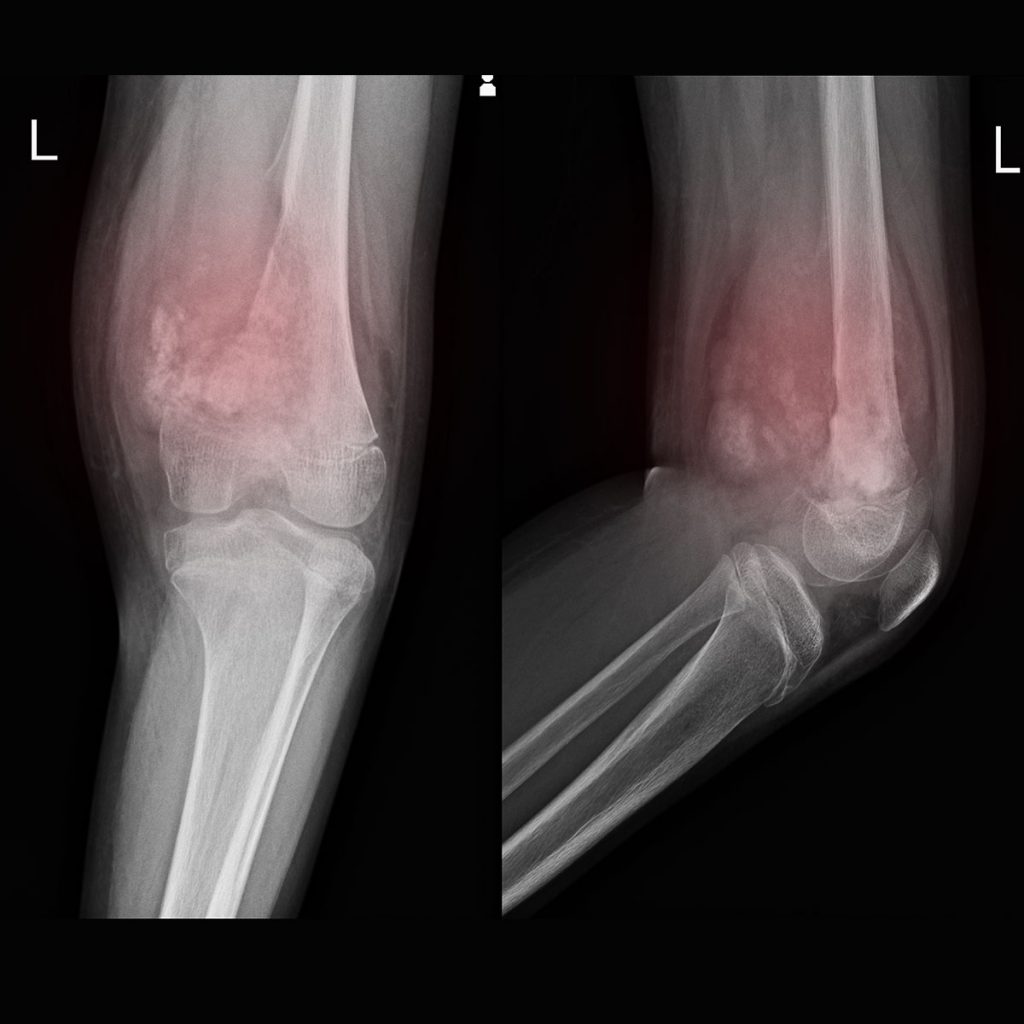
Bone Cancer

Overview
Bone cancer can develop in any bone in the body, but symptoms are commonly found in the long bones of the arms, legs, or pelvis. Cancers that begin in the bone also known as primary bone cancer. Bone cancer is a rare disease that represents less than 1 % of all types of cancer.
The mutation of bone cell causes uncontrolled duplication resulting in forming a mass of cells also known as a bone tumor. This tumor then begins to invade and destroy the healthy bone and tissues. It can develop in both children and adults.
Bone cancer and bone metastasis are not the same. Bone metastasis occurs when cancer cells from another origin of the body spread to the bone such as breast cancer, prostate cancer or lung cancer.
Symptoms
- Bone pain (often gets worse at night)
- Swelling and tenderness around the affected site
- Bone weakening may cause fragility fracture
- Fatigue
- Have trouble with mobility
- Fever
- Unexplained weight loss
If you are worried that you have any of these symptoms, consult a doctor for proper medical history taking, diagnosis, and treatment.
Causes
The reason why bone cancer occurs is unknown. There has been evidence of some types of bone tumors being hereditary, while other cases have shown an association with exposure to radiation.
Types of Bone Cancer
Bone cancers are categorized by the type of cells that cancer originated from. The following are the most common types:
- Osteosarcoma. The most common form of bone cancer, osteosarcoma occurs when the bone produces cancerous cells. It is commonly found in children or in young adults who are still developing. The cancer occurs primarily in the bones of leg or arm. Osteosarcomas rarely develops outside the bones, which is a condition known as extraskeletal osteosarcomas.
- Chondrosarcoma. The second most common type of bone cancer, chondrosarcoma causes the cartilage to produce cancerous cells. This tumor is mostly found in middle-aged and older adults and commonly develops in the pelvis, legs or arms.
- Ewing sarcoma. Tumors appear predominantly in the bones or soft tissues in the pelvis, legs, arms or hips. Children and young adults usually experience this type of bone cancer.
Bone Cancer Risk Factors
- Inherited genetic syndrome such as Li-fraumeni and hereditary retinoblastoma have a higher risk of developing bone cancer.
- Paget’s disease of the bone is a chronic disorder of the bone which can increase the risk of bone cancer. It causes enlargement and deformity of the bones and usually happens to patients who are older.
- Radiation therapy for cancer can increase your risk of developing bone cancer due to the high dosage of radiation.























